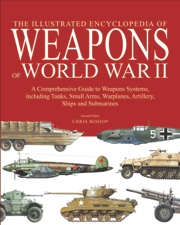I don’t watch TV much beyond the evening news bulletin and a bit of soccer. My response to the deprivations of the small screen is never improved by sitting down in mid-October and seeing commercials for Christmas goodies. It gets worse every year but there is no sense in yearning for simpler times. They are gone. The march of technology isn’t just a threat to the printed word. Take a look at your high or main street to see that relatively recent staples like video/dvd rental outlets have been outflanked by progress.
This book effuses nostalgia for the 1970s, not surprising when we note it is derived from the Orbis part-work War Machine, not one I collected myself, but I still have all the volumes of an Orbis aviation series from the end of that decade. The entire package has the feel of something outmoded in the present day and not wishing to appear harsh I would ask where the sense is in putting together a rehash like this one?
As with a ‘greatest’ tanks book I reviewed weeks ago, titles claiming to be comprehensive are at once brave and in need of careful handling. A book that includes the Australian Owen gun and German armoured trains exhibits all the necessary pretensions but there will always be doubts. The problem comes with the hard choices over what to leave in or exclude and how to balance the entries for the no brainer icons of the war with everything else. It all sails dangerously close to hurricane subjectivity with all the attendant hazards.
For all this, the sheer range of subjects included here from bombs and flamethrowers to cruisers and night fighters is not to be sniffed at. The breadth of it all makes for a weighty tome of over six hundred large format pages.
Leaving aside it’s lineage, I fully understand the editor might be dismayed at my assumption this book is best aimed at a younger audience, but the 1972 Barnes would have loved this bookin a pre-internet age. A fact that pretty much cements my concern that a book like this is some way past its sell by date. The worldwide webhas stolen a march on the printed wordand is unstoppable but an impressive package in print has an authority and something more physical about it that even the internet savvy youth of today can appreciate.
My kids, grown adults, but always kids to me; love books and know how to get the best from them even while they surf and play on the ether via their phones and tablets.So, I did the sensible thing and gave the book to my twenty-two year old son to inspect. He spent a good while on it and came back with similar reservations about its claim to be comprehensive but was generally impressed with the scope. In the end he confirmed everything for me. If he’d got the book when he was thirteen he would have been chuffed to bits, but he couldn’t see much need for it in adulthood.
In all fairness there is a lot in here for military historians of all ages and I wouldn’t be put out if Ifound it at the base of my Christmas tree. For my son the book had a feeling of being too much and not quite enough at the same time, which is a contradiction but is his polite way of saying the impact of it was neither here nor there.
Seeking an analogy I will borrow from Douglas Adams whose own allegedly comprehensive guide of the galaxy begrudgingly upgraded the Earth from harmless to mostly harmless. In view of the array of modern technology at our fingertips this book is, therefore, mostly useful. But in the whacky world of publishing comprehensive reads so much better!
Reviewed by Mark Barnes for War History Online.
THE ILLUSTRATED ENCYCLOPEDIA OF WEAPONS OF WORLD WAR II
A Comprehensive Guide to Weapons Systems, including Tanks, Small Arms, Warplanes, Artillery, Ships and Submarines.
General Editor – Chris Bishop.
Amber Books
ISBN: 978-1-78274-167-1
